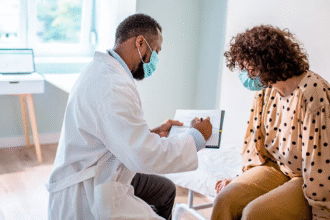In today’s world, taking care of your health is more important than ever. But for many people, the cost of visiting a doctor or getting regular checkups can be a burden. If you’ve ever felt worried about how to afford basic medical care or didn’t know where to start looking for affordable services, you’re not alone.
This article is here to guide you step by step on how to find affordable primary health care services near you, without sacrificing quality or safety. Let’s break it down in a simple and practical way.
What Is Primary Health Care?
Primary health care is the first point of contact you have with the healthcare system. It covers essential services like:
- General check-ups
- Treatment for common illnesses (e.g., cold, flu, minor infections)
- Management of chronic conditions (e.g., diabetes, high blood pressure)
- Immunizations
- Preventive care like screenings and health education
Primary care helps you stay healthy, catch problems early, and manage ongoing conditions.
Why Affordable Primary Health Care Matters
When health care is too expensive, people often delay getting help. This can lead to worsening conditions, higher medical bills later, and avoidable hospital visits. Affordable care helps:
- Prevent serious health problems
- Save money in the long run
- Reduce stress related to medical expenses
- Ensure that even low-income families get the care they need
Tips to Find Affordable Primary Health Care Near You
Here are practical ways you can find cost-effective or low-cost health care services around your area:
1. Start with Community Health Centers (CHCs)
Community Health Centers are non-profit clinics that offer medical services to everyone, regardless of income or insurance status. They often have sliding fee scales based on your ability to pay.
To find a center near you:
- Visit https://findahealthcenter.hrsa.gov/
- Enter your zip code and see a list of CHCs near you
These centers usually offer services like primary care, dental, mental health, and even pharmacy support.
2. Use Government Programs
Depending on your income, age, or disability status, you might qualify for government assistance:
- Medicaid: Offers free or low-cost healthcare for low-income individuals and families.
- Medicare: For people aged 65+ or with certain disabilities.
- Children’s Health Insurance Program (CHIP): Provides health coverage for kids in families who earn too much for Medicaid but can’t afford private insurance.
- Local Health Departments: Often provide free or affordable care, especially for vaccinations, reproductive health, or screenings.
Check your state or city’s health department website for information.
3. Look Into Urgent Care Clinics for Non-Emergencies
Urgent care centers are often cheaper than emergency rooms and don’t require appointments. They’re perfect for:
- Minor injuries
- Common illnesses
- Diagnostic tests
They typically list prices upfront and accept various payment options, including cash discounts.
4. Search for Free Clinics or Mobile Health Units
Some nonprofits and churches run free clinics, especially in underserved communities. These may be open certain days of the week and can provide basic care, prescriptions, and advice.
Mobile clinics are vans or buses equipped with medical tools that travel to local areas. They often serve uninsured or homeless populations.
Search online for:
- “Free clinic near me”
- “Mobile health unit [your city]”
5. Try Telehealth Services
Virtual doctor appointments (telehealth) are becoming more common and often cheaper than in-person visits.
Many platforms offer services like:
- $15–$40 consultations
- 24/7 doctor access
- Mental health therapy sessions
Try services like:
- Teladoc
- MDLIVE
- HealthTap
6. Use Prescription Discount Programs
Sometimes, medication costs more than the visit itself. Luckily, there are free programs that offer discount cards or coupons:
- GoodRx
- SingleCare
- RxSaver
You can use these at most pharmacies, with or without insurance.
7. Ask About Sliding Scale Fees
Many doctors, clinics, and hospitals offer sliding scale payment plans. This means the cost of your visit depends on your income level.
When calling a clinic, ask:
“Do you offer a sliding fee scale or discounts for low-income patients?”
Being open about your situation can help you get more affordable rates.
8. Visit Teaching Hospitals or Medical Schools
Medical students, supervised by experienced doctors, often provide care at teaching clinics. These services are high-quality and much cheaper than private practices.
These are ideal for:
- General check-ups
- Women’s health
- Physical exams
Search “[your city] medical school clinic” to find options.
9. Join a Health Membership Plan
Some clinics now offer membership models where you pay a flat monthly fee (e.g., $30–$50/month) and get unlimited primary care visits.
This is called Direct Primary Care (DPC) and can be very affordable if you need regular visits but don’t have insurance.
10. Use Online Tools to Compare Prices
Websites like:
- Healthcare Bluebook
- Fair Health Consumer
- Sesame Care
…help you compare doctor visit prices, lab tests, and more. Always check the cost upfront before booking a service.
Final Thoughts
Healthcare shouldn’t be a luxury. By exploring community resources, asking the right questions, and using modern tools, you can find quality primary health care that fits your budget. Remember, taking care of your health now prevents bigger problems later. Start small—book that check-up, ask about programs, and don’t be afraid to seek help.
Frequently Asked Questions (FAQs)
1. What if I don’t have health insurance?
You can still get care at community health centers, free clinics, and places that offer sliding-scale fees. Many providers will still see you and help set up payment plans.
2. How can I know if a clinic near me is affordable?
Call ahead and ask if they accept low-income patients, offer sliding fees, or have partnerships with assistance programs. Online reviews and clinic websites often mention pricing too.
3. Can I get prescriptions without visiting a doctor?
In many cases, telehealth services can prescribe medications after a virtual consultation. You can also use prescription discount apps to save money.
4. Are free clinics safe and reliable?
Yes! Free and community clinics are often run by licensed medical professionals and supported by local governments or charities. They’re especially skilled at handling routine care.
5. What should I bring to a low-cost or free clini
Bring ID, proof of income (if applying for a sliding fee), any medical records you have, and a list of current medications. This helps speed up the process.







